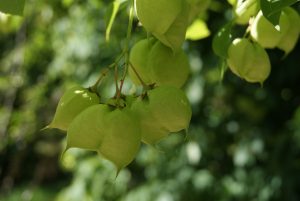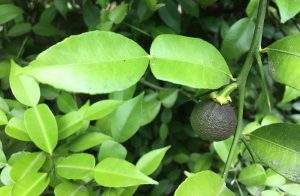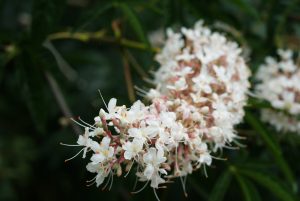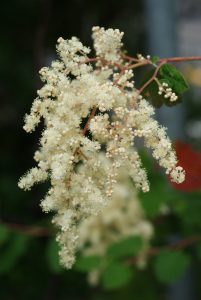Summer is here, and the Arboretum is humming with life! The air is full of floral and resinous scents, the birds are chirping, the bees are flying, and the colorful displays of leaves, flowers, and fruits are many.
There are a lot of different ways to enjoy the Arboretum in summertime for all ages. There are free hikes and tours, classes and workshops, and free youth and family programs to participate in.
Looking to explore the Arboretum on your own? Check out our Plan Your Visit Page, as well as a new blog written by Visitor Information Specialist Greg Hill highlighting some Verdant Ventures.
AND, make sure you stop by the Visitor Center before your adventure! Open daily 10am-4pm, 4000 SW Fairview Blvd, to grab a map, walk recommendations, and a dog biscuit for your furry friends.
Hikes & Tours
Hike with Hoyt (up to 4 miles, all-terrain)
Wednesdays & Saturdays
11am-1pm, sign up at the Visitor Center

Public Tours
Sundays, 11am-12pm
Summer public tours focus on Hoyt Arboretum’s nationally-accredited Conifer Collections.
The first Sunday of the month is the Trees For All public tour that stays on paved trails. Read about the Trees For All tour route and view images.
Youth & Family Programs
 Family Forest Day!
Family Forest Day!
Theme: Trees Are Homes
July 13, 9:00am – 12:00pm
Join us at Stevens Pavilion to celebrate the many ways that trees provide resources and habitat to animals (including humans!).
Special Guests: musician Tallulah’s Daddy, author and puppeteer Leslie Barnard Booth, arborist Ryan Gilpin, and Alberta Food Co-op.
Learn more about Family Forest Day.
Back by popular demand, Pop-Up Nature stations will return to the Visitor Center Courtyard on Thursdays & Fridays from 10am-12pm starting July 11.

Summer Free For All Concert in the Park

Featuring: Ashleigh Flynn & the Riveters
August 1, 5:30 – 8:30pm
Stevens Pavilion, Hoyt Arboretum
Featured Classes
 Qigong (chi gong)
Qigong (chi gong)
Wednesdays, 10:00 – 11:00 am
Join instructor Thomas Ouyang for gentle movement and breathwork under the trees of the Arboretum. Thomas has been teaching qigong for more than 30 years. He specializes in qigong, wushu, acupressure, herbs, and more.

White Pine Trail & Trees
July 16, 5:30 – 7:30 pm
Join arborist and podcaster (Completely Arbortrary) Casey Clapp for a walk to learn more about the interesting flora of White Pine Trail at Hoyt Arboretum including natives, pines, and other significant trees along the way. This will also be an opportunity to dive into the world of pines, their natural history, how to tell different species apart, and what is extra special about the native white pines.
Register for White Pine Trail & Trees.
Explore all the upcoming events at Hoyt Arboretum.
Trees to See!
California Buckeye
This large, deciduous shrub is a member of the soapberry family and is native to California and Southwest Oregon. Its striking, fragrant white and pink flower spikes, with 80 or so blooms on each stalk, attract various species of butterflies. Don’t touch! The seeds, leaves, and sprouts are poisonous but were used by indigenous people (after boiling the plant parts for several days). The nectar is toxic to honeybees, so beekeepers have to be sure this plant is not in their vicinity.
Location: Visitor Center front planting area and on Maple Trail.
American Bladdernut and European Bladdernut
 Staphylea trifolia, Staphylea pinnata
Staphylea trifolia, Staphylea pinnata
The common name of this large, fast-growing shrub comes from its bladder-shaped seed pods, which contain several large, black seeds. The pods appear after the flowers. The seeds are edible and are said to taste like pistachios. The flowers, which bloom before the plant leafs out, come in drooping, bell-shaped clusters. You’ll see plentiful flowers in years that follow hot summers. The American species likes the warm, wet summers of the Midwest. “Trifolia” refers to the three leaflets composing each leaf.
Location: On Walnut Trail near intersection of Hawthorn Trail
Ichang Papeda
 Citrus cavaleriei or Citrus ichangensis
Citrus cavaleriei or Citrus ichangensis
Notice the lemon-scented leaves and, if you’re lucky, a fruit that looks like a pale yellow mandarin but with a much tougher rind. The inside of the fruit is very seedy and contains a small amount of very sour juice. Despite being very hardy, it is seldom cultivated but is used as a stock for grafting more edible citrus species. Since it grows to between 2 and 5 meters high, this native to China is in that in-between size that could make it a shrub or a tree.
Location: Ramp by Visitor Center
Ocean Spray
This Pacific Northwest native is seen commonly along roadsides and other disturbed soils in the Willamette Valley and throughout Oregon. Its common names come from the creamy white flowers that resemble sea foam. The flowers attract butterflies and other beneficial insects. Notice the many fragrant, five-petaled blossoms. The small fruits that follow the flowers often stay late into the fall since birds don’t like them. Coastal tribes eat the Holodiscus’ seeds; use its dense, hard wood for arrows and other tools; and use various parts as medicines.


